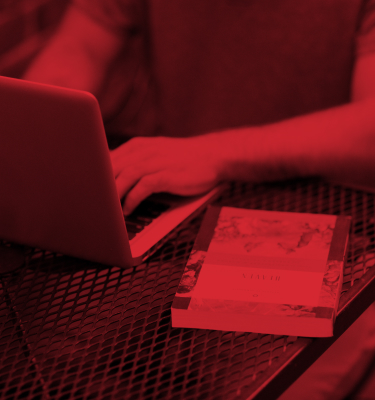by David Gunner Gundersen, Director of Student Life
“If you don’t use it, you lose it.” Most Greek teachers have brandished some version of this educational proverb in the relentless battle for student motivation. The Handy Guide to New Testament Greek by Douglas Huffman (Kregel Academic, 2012) provides a concise summary of grammar, syntax, and diagramming, adding a well-crafted weapon to the arsenal. This power-packed book will motivate and empower students, pastors, and teachers to refresh our memories, concretize our learning, and sharpen our interpretive tools.
At 112 pages and a handy size that purposefully matches the traditional Nestle-Aland and UBS texts, this book fills a gap on the resource shelf of biblical Greek. It would feel at home in a student’s backpack, a pastor’s study, or a professor’s office. The “Handy Guide to NT Greek (excerpt PDF)” available from Kregel includes the table of contents, introduction, and some sample pages, but doesn’t do it justice. Here’s why:
1. Accessible. The writing is clear, the charts are smooth, and difficult concepts are reduced to their simplest terms without being reductionist or simplistic. Of course, accessibility is defined by the target audience, and Huffman is careful to identify that audience at the outset: “second-year Greek students (and beyond), pastors, teachers, and preachers,” and even “would-be experts.” After surveying the book, I’m confident that its target audience will find this Handy Guideto match its title.
2. Concise. Brevity with contours is the best kind. Huffman’s summary descriptions are brief and precise, concise and accurate. For example, he defines “mood” with utmost simplicity while capturing the nuances necessary for accurate understanding: “Describes the author’s portrayal of the verbal action’s actuality (indicative), potentiality (subjunctive), possibility (optative), or intentionality (imperative)” (24). Even the phrase “the author’s portrayal” reveals a sensitive grasp of the way language operates. Anyone with a couple years of biblical Greek under their belt will grasp and appreciate Huffman’s descriptions.
3. Pedagogical. Huffman uses color-coded charts, brief scriptural examples (with the relevant word bolded), basic memory devices, and conceptual illustrations. These diverse methods give the book color and life. Some wading through details is necessary when listing out declensions, endings, and certain rules, but even here the charts provide clear visuals organizing the bits and pieces.
4. Portable. Most people won’t regularly use a huge book, much less a huge grammar, and their neglect is not their fault alone. Certainly convenience can be overvalued by readers, but it can also be undervalued by authors. Huffman provides a portable, convenient handbook that’s accessible not only in content and style but also in size. There’s no intent to replace grammars, only supplement them — a worthy goal that’s met through both content and design.
5. Thorough. “Simple” does not have to mean “simplistic.” I was pleasantly surprised by the appearance of helpful topics that wouldn’t be missed if they hadn’t been included, such as the summary chart on the variety of ways a Greek command can be expressed. I was equally pleased by the detailed treatment of topics that could have been oversimplified. In many instances, Huffman shows us neither simplicity nor complexity but that glorious simplicity on the other side of complexity (O. W. Holmes). He lists (concisely) 20 genitive case usages, 13 usages of the article, and a chart on οτι clauses in the indicative mood, just as a sampling. Don’t mistake this handy guide for a full reference grammar, but don’t mistake it for a flimsy insert for your Greek New Testament, either.
6. Contemporary. Contemporary is not always better, but when it comes to verbal aspect, recent research is essential to grasp. Huffman summarizes: “English verb tenses have a time-based orientation (e.g., past/present/future time) and some other languages have a kind-of-action (German: Aktionsart) tense system (e.g., linear/punctiliar/completed kinds of action); both of these systems base tense-form selection on the historic action itself. Many Greek grammars in the last two hundred years have confusedly thought the same about the Greek language. In NT Greek, however, tense-form selection is based primarily upon the way the author wishes to think about the action. This involves two considerations: 1) the aspect he chooses to focus on, and 2) the spatial vantage point he chooses to offer” (61). Those who learned only the traditional view of verb tenses may need to survey Constantine Campbell’s short book Basics of Verbal Aspect in Biblical Greek (Zondervan, 2008) to catch up on recent shifts.
The reasons we surrender hard-earned proficiency in the biblical languages are legion, but Douglas Huffman has given us both motivation and weaponry for regaining ground.
<> <> <> <> <>




